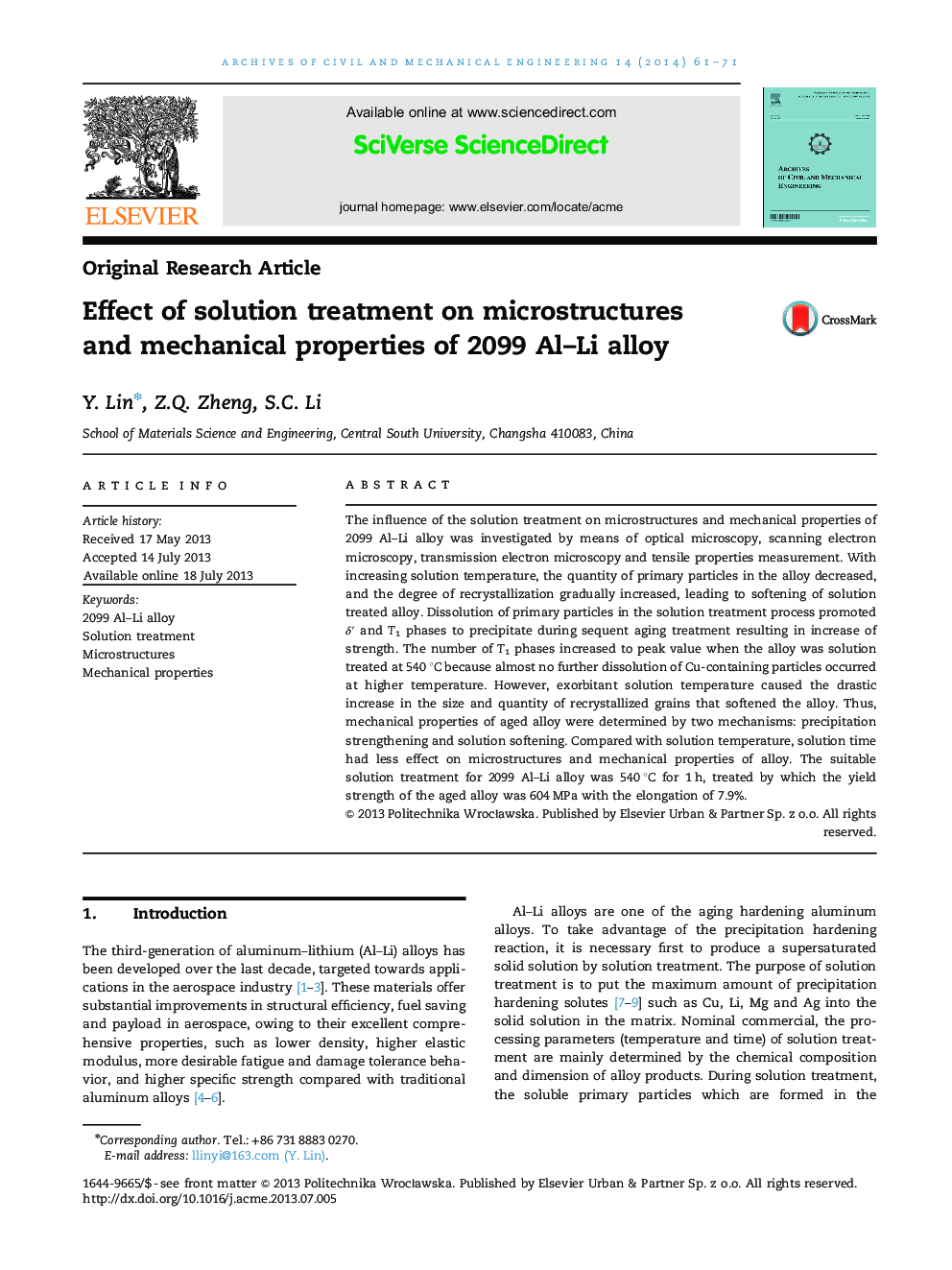| Article ID | Journal | Published Year | Pages | File Type |
|---|---|---|---|---|
| 245604 | Archives of Civil and Mechanical Engineering | 2014 | 11 Pages |
The influence of the solution treatment on microstructures and mechanical properties of 2099 Al–Li alloy was investigated by means of optical microscopy, scanning electron microscopy, transmission electron microscopy and tensile properties measurement. With increasing solution temperature, the quantity of primary particles in the alloy decreased, and the degree of recrystallization gradually increased, leading to softening of solution treated alloy. Dissolution of primary particles in the solution treatment process promoted δ′ and T1 phases to precipitate during sequent aging treatment resulting in increase of strength. The number of T1 phases increased to peak value when the alloy was solution treated at 540 °C because almost no further dissolution of Cu-containing particles occurred at higher temperature. However, exorbitant solution temperature caused the drastic increase in the size and quantity of recrystallized grains that softened the alloy. Thus, mechanical properties of aged alloy were determined by two mechanisms: precipitation strengthening and solution softening. Compared with solution temperature, solution time had less effect on microstructures and mechanical properties of alloy. The suitable solution treatment for 2099 Al–Li alloy was 540 °C for 1 h, treated by which the yield strength of the aged alloy was 604 MPa with the elongation of 7.9%.
